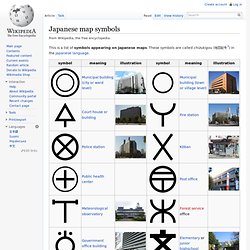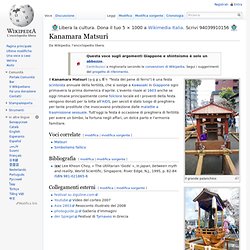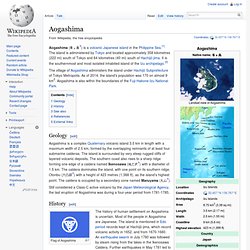

Fox Village tourists in Japan can feed six breeds of foxes Entry into Fox Village in Japan costs £4 and visitors can feed animalsFoxes are believed to bring good luck in Japan, their history is celebratedBut visitors warned that foxes are wild animals, and can bite By John Hutchinson for MailOnline Published: 09:53 GMT, 8 February 2015 | Updated: 09:28 GMT, 9 February 2015 With their little faces looking up to the camera, six breeds of foxes stand patiently awaiting their lunch.

This is Fox Village, in Japan’s Miyagi prefecture, where for less than £4 (700 Japanese Yen) visitors are allowed entry and can feed the animals. Foxes are heralded in Japan, with many believing they have mystical powers, as well as others who believe they bring good luck as they descend from Inari Okami, the Shinto deity of fertility, prosperity and rice. The foxes get ready to be fed at the Japanese Fox Village in the Miyagi prefecture Guests are encouraged to feed the foxes, but it's sensible not to put your fingers too close The fox village is split into two sections.
Jigokudani_hotspring_in_Nagano_Japan_001.jpg (800×600) Japanese map symbols. This is a list of symbols appearing on Japanese maps.

These symbols are called chizukigou (地図記号?) In the Japanese language. Partial list of symbols for the visually impaired[edit] Official symbols according to the conventions of the Geographical Survey Institute of Japan appear with a circle below. See also[edit] External links[edit] Rainy season brings glow-in-the-dark mushrooms. 24 May 2006 With the arrival of Japan's rainy season, a mysterious type of green, glow-in-the-dark mushroom begins to sprout in Wakayama prefecture.

The Mycena lux-coeli mushrooms, known locally as shii no tomobishi-dake (literally, "chinquapin glow mushrooms"), sprout from fallen chinquapin trees. As they grow, a chemical reaction involving luciferin (a light-emitting pigment contained within the mushrooms) occurs, causing them to glow a ghostly green. The luminescent mushrooms were long believed to be indigenous solely to Tokyo's Hachijojima Island after they were discovered there in the early 1950s. In 1995, however, mycologists found the fungus growing wild in coastal areas of the southern Kii peninsula, as well as in Kyushu and other areas. The mushrooms thrive in humid environments, popping up during Japan's rainy season, which typically lasts from the end of May to July. [Source: Mainichi Shimbun] 'Cat Island' is a feline's purrfect paradise.
While many cities are working to curb feral cat populations through spay-and-neuter programs, there’s one place where cat numbers continue to grow and the locals encourage it.

Tashiro-jima is a small island in Miyagi Prefecture, Japan, that’s home to more cats than people. Better known as “Cat Island,” it has about 100 permanent residents — most of whom are over 65 years of age — and hundreds and hundreds of cats. During the 1800s, Tashiro-jima was popular with fisherman who would stay on the island overnight. The cats would follow them to the inns and beg for scraps, and over time, the fishermen developed a fondness for the cats and began interpreting their actions as predictions about weather and fish patterns. They believed that feeding the cats would bring them wealth and fortune, a belief that continues today. According to local stories, one day when a fisherman was collecting rocks to use for his nets, a stray stone fell and killed one of the cats.
Kanamara Matsuri. Da Wikipedia, l'enciclopedia libera.

Il grande palanchino Il palanchino in forma di battello Il palanchino Elisabeth senza tetto Voci correlate[modifica | modifica sorgente] Bibliografia[modifica | modifica sorgente] (EN) Lee Khoon Choy, « The Utilitarian 'Gods' », in Japan, between myth and reality, World Scientific, Singapore; River Edge, N.J., 1995, p. 82-84 ISBN 981-021865-6 Collegamenti esterni[modifica | modifica sorgente] Aogashima. Aogashima (青ヶ島?)

Is a volcanic Japanese island in the Philippine Sea.[1] The island is administered by Tokyo and located approximately 358 kilometres (222 mi) south of Tokyo and 64 kilometres (40 mi) south of Hachijō-jima. It is the southernmost and most isolated inhabited island of the Izu archipelago.[2] The village of Aogashima administers the island under Hachijō Subprefecture of Tokyo Metropolis. As of 2014, the island's population was 170 on almost 9 km2. Aogashima is also within the boundaries of the Fuji-Hakone-Izu National Park. Geology[edit] Aogashima is a complex Quaternary volcanic island 3.5 km in length with a maximum width of 2.5 km, formed by the overlapping remnants of at least four submarine calderas. Still considered a Class-C active volcano by the Japan Meteorological Agency, the last eruption of Aogashima was during a four-year period from 1781-1785.
History[edit]